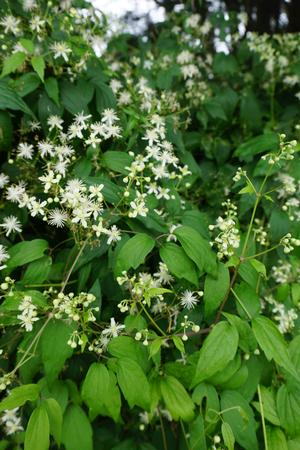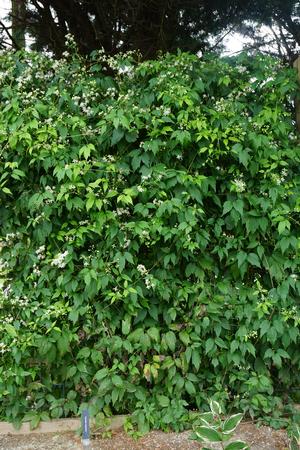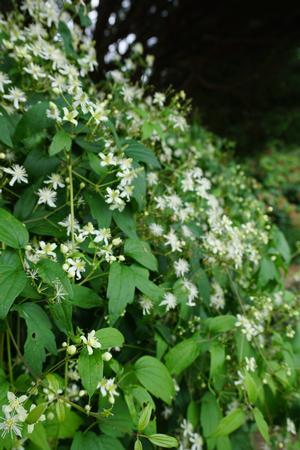A native replacement to the invasive sweet autumn clematis (Clematis terniflora), you can tell the difference between the two plants by the foliage. Native Virgin's bower has trifoliate leaves with toothed edges and a smoother leaf texture while sweet autumn clematis has trifoliate leaves that are entire (smooth) around the edges and has a coarse texture to the leaf surface.
Clematis virginiana supports much wildlife. Hummingbirds and bees enjoy the nectar while songbirds roost in the foliage. The stems, stalks, and leaves of the plant are toxic. "The nectar of the staminate flowers attracts Halictid bees (including Sphecodes clematidis), wasps, and various kinds of flies. Insects that feed destructively on Virgin's Bower and other Clematis spp. include larvae of Contarinia clematidis (Clematis Bud Gall Midge) and Prodiplosis floricola (Clematis Flower Midge), larvae of the leaf-mining fly Phytomyza loewii, caterpillars of Horisme intestinata (Brown Bark Carpet Moth), caterpillars of two moths, Thyris maculata (Spotted Thyris) and Thyris sepulchralis (Mournful Thyris), and Myzus varians (Peach Leaf-Roll Aphid). These vines are the summer hosts of this introduced aphid." - Illinois Wildflowers



